Chord Music: A Beginners Guide

Chord Music: A Beginners Guide To Music Theory
All musicians should learn music theory; it’s important for the creation of superb music. Devoting a small amount of time and energy to basic music theory concepts can pay off in massive ways. So, what are the most important theories every musician should learn?
One of the most vital skills is building chords. It’s a music theory staple that can and most likely will transform how you write, hear, and understand music. Even if you know how to build chords already, a quick refresher course is excellent for sharpening your skills.
It’s not always easy to navigate among all the chords when you begin learning the guitar or the piano. But in this article, we’re going to show you how:
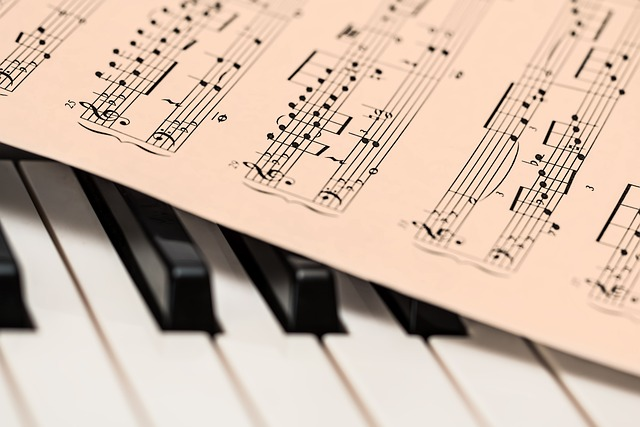
What Are Chords In Music?
Have you ever heard of the phrase chord changes? Have you ever heard people use the phrase chords when talking about music and you didn’t have a clue what they meant?
You’re not alone.
Chords are two or more harmonic notes played simultaneously. Musicians typically build most chords using three notes, and they build them on the root note (the starting note). The chord quality will determine the rest of the notes in a chord.
Think of your music like a tall New York City skyscraper; your chords are the foundation of that huge skyscraper. Everything starts from the chords; just like everything starts from the foundations of a building.
The Beatles were the masters of pop music chord changes. They used chord changes to create incredible melodies that defined their albums. Every musician can and should do the same. In many cases, listeners—especially casual music fans—won’t recognise chords in a song. However, they provide the shape and space to create the melody.
Guitarists are often overwhelmed by the number of chords you can learn when starting the guitar. Unfortunately, many guitarists will try to learn too many chords at once—which typically results in frustration. But chords are important in music, and every guitarist needs to learn them.
What Are Intervals In Music?
Intervals are the note-to-note relationship you hear in any music. Chords, however, are merely varying combinations of intervals. The slightest change of a chord interval can cause massive changes in the rhythm of a song. The best musicians use intervals to create incredible melodies.
You must plug in a specific number of semitones to understand intervals in chords. Semitones are the distance between one note and the note straight above it. On a guitar, one fret represents a semitone.
The Four Main Chords In Music
There are four basic chord types in music that you can learn. They are built with three notes. Let’s look at the four chords and how you can build chord quality:
Major Chord
Major chords sound complete, full, and resolved. Many songs were built by major chords, including Happy Birthday and Free Fallin by Tom Petty. Musicians build major chords by adding the intervals of a major third and perfect fifth above the root. Remember, the root is the starting note of any chord.
Minor Chord
Minor sounds sound very different from the wholesome sound of major chords. They sound pensive and morose. However, musicians use them to convey many types of emotions in music. Musicians build minor chords by adding a minor third and the perfect fifth above the root.
Diminished Chord
If you’re looking to add tension to your music, you’ll want to a diminished chord. Musicians build a diminished chord by adding a minor third and tritone adobe the root. Remember, a tritone is made from six semitones. You can hear a diminished chord in many songs, including ‘God Only Knows’ by The Beach Boys. A diminished chord is a transition between two more stable-sounding chords.
Augmented Chord
Augmented chords may sound weird and like something from a science fiction movie. You’ll rarely hear this chord used in music, but musicians use an augmented chord from time to time. Musicians create augmented chords by simple major chords. However, they use an added raised fifth. For example, the major C chord includes the notes C, E, and G. In contrast, the augmented chord will feature C, E, and G#.
What’s The Difference Between a Chord and Triad?
All triads are chords, yet not all chords are a triad. Musicians build triads with only three-note chords. If you want to make a major triad, take a note, add the note a third higher, and then add another note to make it even higher. In contrast, a chord contains two notes, but it can have many more notes.
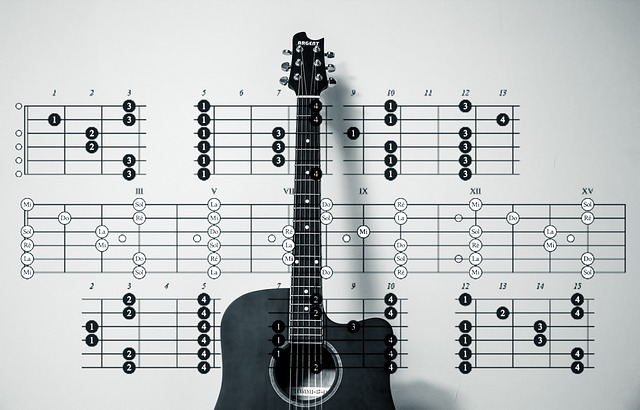
A triads 3 notes include:
- A root note
- A major or minor third
- A perfect or flattened fifth
The different types of triad:
- 1, 3, and 5 equal a major scale triad
- 1, b3, and 5 equal a minor triad
- 1, b3, and b5 equals a diminished triad
What Is An Extended Chord?
You may have heard of extended chords. These are simply chords and triads with notes extended past the seventh chords (past minor seventh chords and major seventh chords.)
An extended chord is excellent for creating richer, more harmonic sounds than basic major and minor triads.
How To Learn Chords On Guitar
The best way to learn chords on guitar is to start with open chords. They don’t require much finger strength or dexterity to play, so they’re ideal for beginner musicians. Your success with open chords will keep you motivated to learn more complex chords and grow as a musician. Guitar courses and bass guitar courses are excellent for teaching you chords.

Here are the 11 main guitar chords to learn:
A Major Chords
If you’re looking for an easy chord, you’ll struggle to beat A major because the entire chord is on the second fret. You only need to put your first finger on the fourth string, your second finger on the third string, and your third finger on the second string.
C Major Chord
C major is an easy chord to play. Your second and third fingers should align along a slanted pattern to make the chord. It might seem difficult at first without strong fingers, but you’ll soon master it.
D Major Chords
Although D major has a unique triangle shape, it’s a relatively easy chord to play. Simply use your first two fingers to play E and G on the second fret. Then, you can hold down the third fret with your third finger.
E Major Chords
The E major chord isn’t always easy to play, but it’s a great one to learn because it requires every string to play. Put your first finger on the first fret of the third string, your second finger on the second fret of the fifth string, and your third finger on the second fret of the fourth string.
G Major Chords
The G major chord is trickier than the other chords, but it’s important to learn. Place your first finger on the second fret of the fourth string, your second finger on the third fret of the fifth string, and your third finger on the third fret first string.
A Minor Chords
A minor should be easy once you know how to play an E major because it’s very similar. Simply put your finger up one string.
B Minor Chords
The B minor chord is a big step up. When you start learning barre chords, B minor is a great place to start.
C Minor Chords
C minor is a sad and meaningful chord that adds so much to music. However, it’s also very hard to master.
D Minor Chords
D minor is easy to learn if you can play D major. However, you’ll need to move the high E from the second to the first fret.
E Minor Chords
The E minor chord is the same as the E major chord but you must remove the G string component. It’s a super easy chord to learn.
G Minor Chords
The G minor chord isn’t very popular, but it’s still nice to know. Simply use the third fret and barre all six strings.
Here is a great strategy for learning guitar chords:
Start With A, E, and D Major
The best open chords to start with are A, E, and D major. There are many songs you can play with these chords because they’re the simplest chord progressions in Western music. Whenever a chord name is represented by a single letter, you should assume that they’re major chords.
Use the fingerings outlined in chord diagrams and you’ll find that you have an anchor finger between all three chord shapes. By having an anchor finger, you can smoothly change between chords.
Popular songs you can play with A, E, and D chords are Chasing Cars, Happy Birthday, and Three Little Birds. You could also learn the E minor chord at an early stage. This chord allows you to play another popular chord progression: the ii (E minor), V (A major), and I (D major).
Progress To G, Cadd9, Em7, D/F#
Once you’ve mastered simple A, E, and D major chords, you can move to G, Cadd9, Em7, and D/F#. Musicians have used these chords on countless songs because they’re simple to use. You only need to move two fingers between most of these chord shapes. You’ll probably notice these chords have rather crazy names, but why is that?
The first chord is a G major chord. The second chord is read as ‘C add nine’, meaning it’s a C major chord with an additional ninth above the root of the chord. That probably means little to you if you don’t know music theory, which is okay at this point.
The third chord is simply ‘E minor seven’. If you see it written as Em, you’re safe to assume the lowercase ‘M’ donates a minor chord. However, the additional 7 tells you that there’s a minor seventh interval added to the minor E chord. The fourth and final chord is read as ‘D slash F-sharp.’ The chord is a D major chord, but the F# that comes after the slash tells you that you’ll play the F# note as a bass note.
Sure, these chords are a step up from the previous three chords and may take some time to master. However, they are easier to learn once you’ve mastered the basic major chords. In addition, you’ll need to use all four fingers to fret notes, which is tricky when you’re first starting. Popular songs you can play at this stage include More Than Words by Extreme, A Thousand Years by Christina Perri, and Perfect by Ed Sheeran.
Learn Am, Dm, Em, G, C
Now it’s time to learn the final open chords on the guitar. At this point, you’ll be growing as a guitarist and ready to progress to the more challenging chords. The Am, Dm, Em, G, and C chords are trickier open chords to learn because there are zero common anchor fingers between chords. As a result, it’s far more challenging to perform smooth chord changes.
You should also pay attention to the alternate way you can play the G major chord. You can play this chord in many ways because it’s not fixed. In addition, the G major chord requires you to mute the fifth and first strings with your other fingers. You can accomplish this with your ring finger. However, try to play around with your finger positioning to see what works best for you.
Master Barre Chords
Now you’re starting to master guitar chords slowly but surely, and it’s an excellent time to move on to barre chords. However, you should be patient when learning these chords because they require more finger strength, dexterity, and coordination. But if you’ve spent lots of time perfecting the open chords, you’re probably ready to try these.
Barre chords are incredibly powerful tools for guitarists because they’re the key to playing 90% of the chords you’ll come across. If you ever encounter a song with a Bm or F chord, you can play it with barre chords.
So what’s the best way to learn barre chords? First, you must ensure your fretting technique is excellent. You’ll need to check that your fingers, arm, and wrist are in superb positions. The index finger is the most important finger when mastering barre chords. Lie it straight across all six guitar strings. Your first knuckle should lie between the 3rd and fourth string. However, the second should graze the edge of your fretboard.
For E shapes, you can extend the tip of your finger beyond the 6th string. In contrast, you can pull the tip of the index finger back so it’s lightly touching the 6th string on A shapes. If you place the index finger directly over the fret, you should move it slightly below or above to avoid muting the sound.
Your thumb positioning is also crucial when learning barre chords. When you play barre chords, bring your thumb beneath the guitar neck. Technically, you can barre with your thumb hanging over the neck, but it’s much easier when you maintain it halfway between each edge of the neck.
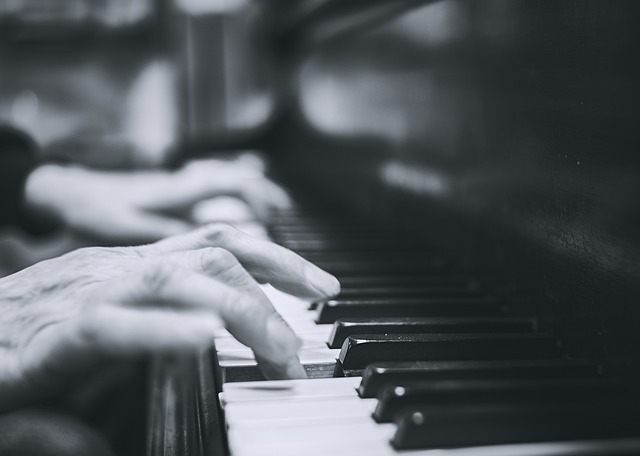
How To Learn Chords On Piano
Chords on piano and guitar are the same, but you must play them differently to achieve the same result. If you can build chords on both piano and guitar, you’ll grow into an incredible musician. Let’s take a closer look at building chords on a piano or keyboard:
What Are The Major Piano Chords?
The most popular triad on a piano—or three-note chord—is the major chord. They’re excellent chords for beginner pianists because of their versatility and popularity.
To play the major chord on the piano, you should begin by choosing a root note, which can be any of the keyboard notes. Count up two steps from the root note and you’ll find the ‘third note’. From the third note, count up one and a half steps or three-half steps and you’ll find the fifth note.
Here’s a list of the major piano chords:
- C major chord (C). C – E – G
- C# major (C#). C# – E# – G#
- D major (D). D – F# – A
- Eb major (Eb). Eb – G – Bb
- E major (E). E – G# – B
- F major (F). F – A – C
- F# major (F#). F# – A# – C#
- G major (G). G – B – D
- Ab major (Ab). Ab – C – Eb
- A major (A). A – C# – E
- Bb major (Bb). Bb – D – F
- B major (B). B – D# – F#
What Are The Minor Piano Chords?
Minor chords, just like major chords, contain three basic keyboard notes: a root note, a third note, and a fifth note. Select any root note and count up to three and a half steps to play a minor chord. From the third, you can count two whole steps or four half-steps to find the fifth.
Minor chords are extremely common in pop and rock music. A prime example of a rock song with a minor chord is ‘comfortably numb’. However, most rock and pop songs use a mixture of minor and major piano chords.
Here is a list of the most common minor piano chords:
- C minor chord (Cm). C – Eb – G
- C# minor (C#m). C# – E – G#
- D minor (Dm). D – F -A
- Eb minor (Ebm). Eb – Gb – Bb
- E minor (Em). E – G – B
- F minor (Fm). F – Ab – C
- F# minor (F#m). F# – A – C#
- G minor (Gm). G – Bb – D
- Ab minor (Abm). Ab – Cb – Eb
- A minor (Am). A – C – E
- Bb minor (Bbm). Bb – Db – F
- B minor (Bm). B – D – F#
What Are Diminished Chords On The Piano?
Diminished chords are less common than major and minor chords on a minor, but you can still hear them on some songs. A diminished triad uses a minor third and a lower fifth (called a diminished fifth.)
Diminished chords have a spookier sound on the piano. You’ll often hear these chords in a transition between two stronger-sounding, more prominent chords. For example, the Beach Boys used a diminished chord in the song ‘God Only Knows’.
Here is a list of the common diminished piano chords:
- C diminished (Cdim). C – Eb – Gb
- C# diminished (C#dim). C# – E – G
- D diminished (Ddim). D – F – Ab
- D# diminished (D#dim). D# – F# – A
- E diminished (Edim). E – G – Bb
- F diminished (Fdim). F – Ab – Cb
- F# diminished (F#dim). F# – A – C
- G diminished (Gdim). G – Bb – Db
- G# diminished (G#dim). G# – B – D
- A diminished (Adim). A – C – Eb
- A# diminished (A#dim). A# – C# – E
- B diminished (Bdim). B – D – F
What Are Chord Progressions?
If you want to become a great musician, you need to master chord progressions. Progression from one chord to another is the bedrock of music, regardless of the instrument.
A chord progression is simply the name for a series of chords. Chord progressions will often repeat within a song, and it’s typical for a song’s chorus to feature a different chord progression to add variety.
Certain chord progressions are more common than others. However, ear training can help you recognize chord changes by ear—meaning you can write them down and play them on your guitar. Here are some common chord progressions you will encounter when learning chords in music:
The I-IV-V Chord Progression
Perhaps the most classic of all chord progressions is the I-IV-V Chord Progression found in every genre. It has a rounded, satisfying feeling to it.
The ii-V-I Chord Progression
Another common chord progression you’ll encounter when learning music chords is the ii-V-I Chord Progression. This chord progression is especially common in jazz music. For example, Miles Davis’s ‘Tune Up’ is a prime example of this chord progression.
The I-V-vi-IV Chord Progression
The I-V-vi-IV Chord Progression is the important cousin of the I-IV-V Chord Progression. It sounds incredibly natural and the presence of the minor chord offers a melodic quality.
How To Write Your Own Chord Progressions
There are no real rules to writing your own chord progressions. However, there are some specific movements that sound good. Remember, the resolution of V to I is almost always a powerful chord progression.
Here are some tips for writing your own chord progressions:
Use Chords That Don’t Belong To The Key
An excellent idea is to use a new chord and then return to an old chord immediately. This chord progression lets the listener know the chord progression was temporary and intentional.
Know Your Chord Qualities
You should always know your chord qualities before writing your own chord progressions. Remember, I, IV, and V are the major chords, while the ii, iii, and vi are minor. Combining major and minor chords is an excellent way to progress chords.
Use a Chord Map
Using a chord map is almost always a good idea when you first learn how to write your own chord progressions. Many chord maps allow you to start anywhere on the map and follow the arrows downstream to find the best chord progressions for you.
Use Chord Inversions
You don’t have to arrange the notes in a chord in any particular order. You can reshuffle them for varying sounds. Chord inversions, for example, involve spreading the notes through several octaves to build a dynamic sound.
Useful Tips for Learning Chords
The guitar is an incredibly versatile instrument to play. It can deliver many effects, such as delicate fingerpicking to driving strumming. A guitarist must have a robust vocabulary of chords to draw from to achieve this.
However, let’s be brutally honest for you for a moment: There are hundreds of chords you can learn. Then again, you only need to learn a few essential chords to begin your journey. The following tips will help you learn chords in no time:
Have a Solid Plan
When you’re starting to learn chords, it’s essential to have a strong plan. Look honestly at the time you have weekly for learning chords. Then, you must set realistic goals for yourself. You may decide to learn three chords per week, which is a solid goal for beginners. However, you might choose to learn one chord per week. Most importantly, pick a goal that’s achievable and exciting for you.
As any guitarist knows, there are hundreds of chords you can learn because a guitar is such a diverse instrument. Some of the most important chords are major and minor triads or the seventh chord. You can play these chords in various positions on the fretboard, and combine them to create complex-sounding progressions.
But, first things first: Get yourself an excellent plan.
Use Superb Resources
When you learn anything, you’ll need reliable sources. It’s the same when you learn music. Ask a friend or a guitar teacher for recommendations. However, one of the best ways to learn how to build chords is through a course on songwriting tips or a songwriting lyric guide.
You can learn most beginner chords with basic books, but you’ll need more detailed resources to progress beyond basic chords.
Learn How to Read Chord Diagrams
Chord diagrams—otherwise known as chord charts—are a visual representation of a portion of the guitar neck where all the information required to learn guitar chords can be written.
You’ll find chord diagrams extremely helpful when learning guitar chords. They are the most useful and quickest way of notating chords; they are a must-learn.
Practice Correctly
Practising correctly is essential when learning a chord. Otherwise, you can pick up bad habits and the learning process will take substantially longer. Just because your fingers are in the right places doesn’t mean the major and minor chords will sound correct.
You must assess the chord’s sound by playing each string at a time. Then, listen for muted or muffled notes. If you hear any notes that sound slightly incorrect, you’ll need to adjust your fingers.
It’s always essential to push the fingertip straight into the fretboard whenever possible to prevent muting strings. You can always place your thumb further down the back of the guitar neck to help your fingers hold down the strings at proper angles.
Final Thoughts
Learning chords in music can be challenging. However, every musician—regardless of their instrument or songwriting genre—must learn chords. The best way to learn how to build chords is through an online course from the comfort of your home. We have a selection of expert courses to help you thrive as a musician.
From the blog
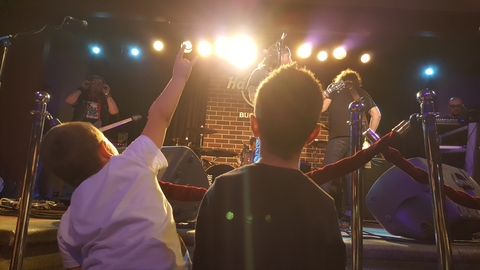
Rockstars in Training: The Best Kids’ Electric Guitars for 2024
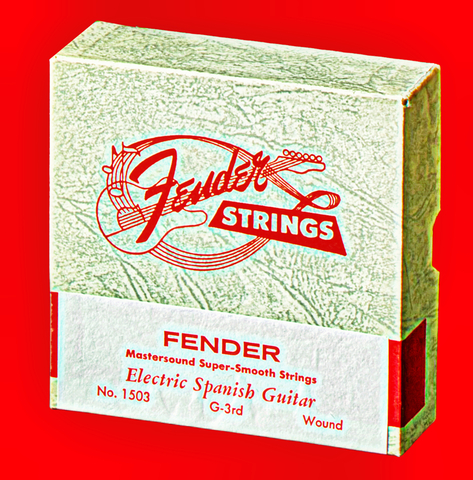
Redefining Your Riffs: How Electric Guitar Strings Shape Your Sound


